69 Healthiest Superfoods List Backed by Science
What are these superfoods that everyone has been talking about?
Superfoods are foods that are unusually high in several nutrients that we can’t get enough of in our regular diets or have exceptionally positive health effects.
You may have tried some of these before and may have never heard of others, but these are the healthiest foods on the planet, and you can add any of them, or even all of them, to your diet for a delicious boost to your own health and well-being.
Since they are so jam-packed with vitamins, minerals, and antioxidants, they can help your skin, liver, heart, and brain, making the addition of superfoods a great way to fight off chronic disease and signs of aging.
In alphabetical order, here we go!
Acai Berries
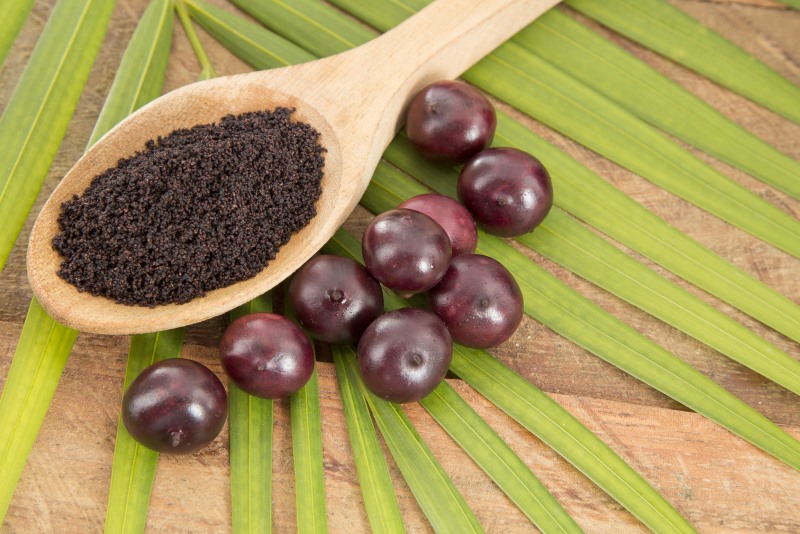
Acai berries are small, dark purple spheres that are mildly sweet and grow in the Amazon rain forest.
These tiny fruits are bursting with antioxidants.
They can help the liver metabolize fat from the diet, and they aid our digestion.
Since they are so high in vitamin C, they are a great boost to the immune system, and they can improve skin health as well as helping the heart and cardiovascular system with their anti-inflammatory properties.
Acai is rarely available fresh, so look for raw juices, dried berries, or powders that have been processed at a low temperature. (1)
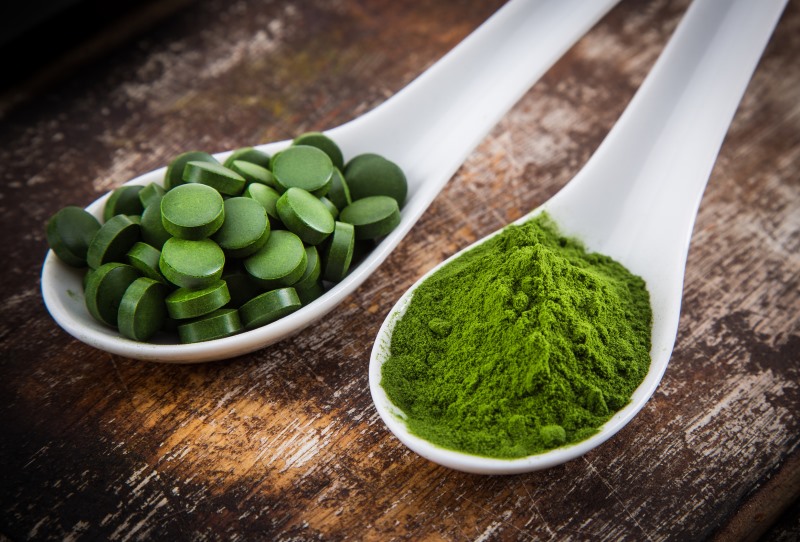
Algae
Extracts from algae, specifically chlorella and spirulina, are the greenest of the greens and contain magnesium, potassium, and B vitamins in a vegetarian source.
Usually available in powders and tablets, algae can help balance hormones and reduce high blood pressure.
Not only is it great for decreasing overall inflammation, but algae is also able to help bind and remove toxic heavy metals from our bodies and can even reduce the harmful effects of radiation and chemotherapy.
Since it’s so great at detoxification, it’s an easy addition to your daily plan to combat all the pollution around us. (2)
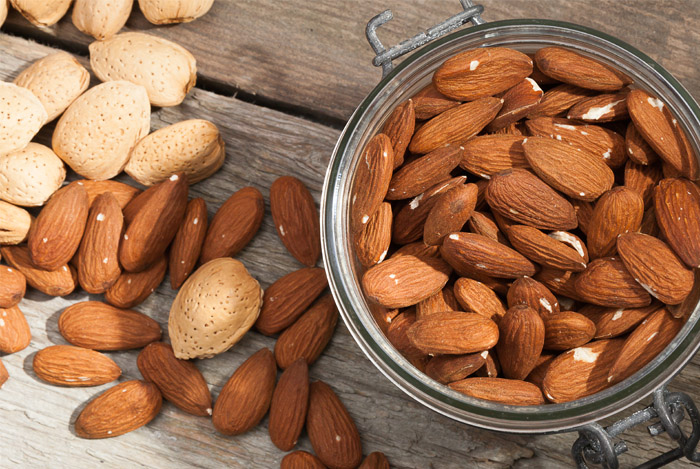
Almonds
Almonds might be a little high in fat, but that’s no reason to keep them off your plate.
Almonds are notorious for being able to soothe irritated digestive systems, especially for people who have acid problems.
These versatile little nuts can be eaten whole, made into milk, or ground into a flour as a gluten-free alternative.
Loaded with magnesium and vitamin E, these nuts are known to improve heart health due to their content of monounsaturated fats.
They are able to help prevent plaque buildup in artery walls and manage cholesterol levels.
Since they are so easy to eat, you can measure your servings so that you don’t accidentally eat the whole bag.(3)

Apple Cider Vinegar
Frequently abbreviated ACV, this raw vinegar is famous for helping manage such conditions as diabetes and obesity.
Easily found in most grocery stores, ACV helps fat cells release their fats to be used as energy in the body.
Not only does this help in weight management, but it also helps regulate your energy throughout the day.
Apple cider vinegar has been known to improve skin texture and elasticity, visibly making you look younger.
Even though it’s an acid, it’s fantastic for aiding digestion and soothing stomach discomfort.
It’s also a big source of potassium, which we usually lack in sufficient quantities.(4)
For the full list of 15 science-backed health benefits of apple cider vinegar check out this article.
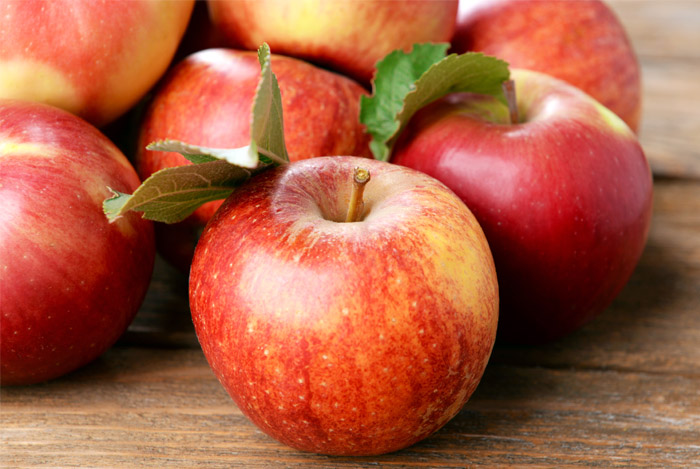
Apples
An apple a day may actually keep the doctor away, and science is catching up with this piece of traditional wisdom.
High in fiber and the vitamin C our immune system needs to fight off infections, this filling fruit should be eaten raw for the most benefits.
Raw apples contain enzymes that help with digestion and reduce inflammation.
Apples contain quercetin, which has been shown in studies to have anticancer and mood-stabilizing effects.
Apples also contain chlorogenic acid, which can help manage blood sugar and even make for an easier time if you’re trying to lose weight.(5)

Asparagus
Asparagus contains a unique fiber called inulin, which isn’t digestible by our own bodies, but the beneficial bacteria in our large intestines love it.
Adding more of this ideal food to our diet can improve digestion and elimination and also decrease bloating and stomach discomfort.
High in vitamin K and folate, asparagus is ideal for maintaining bone health and cardiovascular integrity.
Some people experience a funky odor when they pee after eating asparagus.
This is common and normal, though, and not something to worry about.
Steaming or lightly sautéing are easy ways to prepare asparagus and will ensure that you get the most available nutrients.(6)
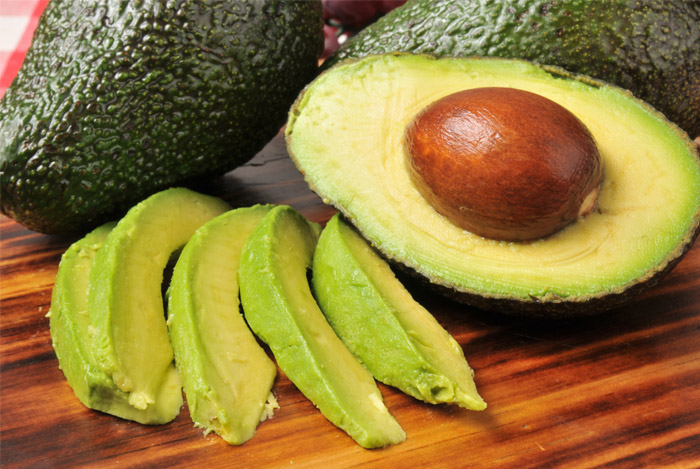
Avocado
Technically classified as a fruit, avocados are versatile for their texture and flavor but most importantly for their nutrient density.
The essential fatty acids in avocados, along with the high amount of fiber they contain, make them great for digestion and inflammation.
More than that, though, is the high amount of nutrients, such as vitamins A, B, C, E, and K, along with magnesium, potassium, iron, and copper.
Plus, they are high in protein and antioxidants.
Adding an avocado each day to your diet is one of the healthiest things you can do for yourself and your family, and studies have shown that they reduce the risk for metabolic syndrome.
Don’t limit yourself to just salads, wraps, or guacamole.
Since they have such a mild flavor and versatile texture, they can be used in smoothies, ice cream, and even desserts, such as brownies.(7)
To learn more about health benefits of avocado, please read 19 Science-Backed Health Benefits of Avocado article.
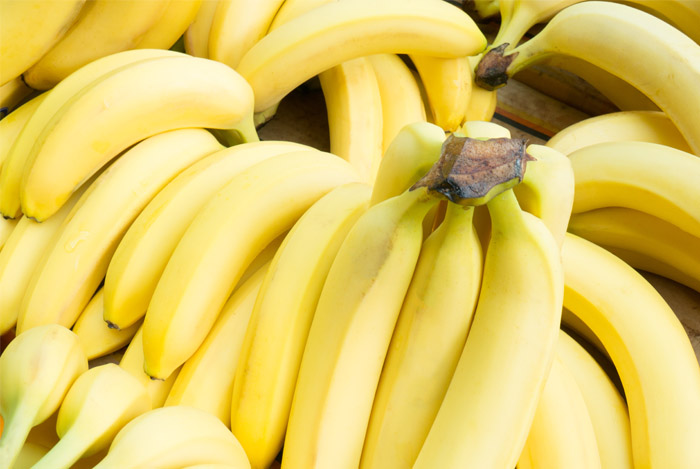
Banana
Many people know bananas are a good source of potassium and choose them when they experience cramps, but this common breakfast food can also help regulate your moods and make you a happier person!
Bananas have the right kinds of sugars to help you maintain stable energy levels and fuel your workouts to build stronger muscles, but they also contain the amino acid tryptophan, a precursor to serotonin, which helps improve our sleep and overall disposition.
It’s so good for digestion that it’s been known to halt bouts of diarrhea because of the fiber it contains.(8)
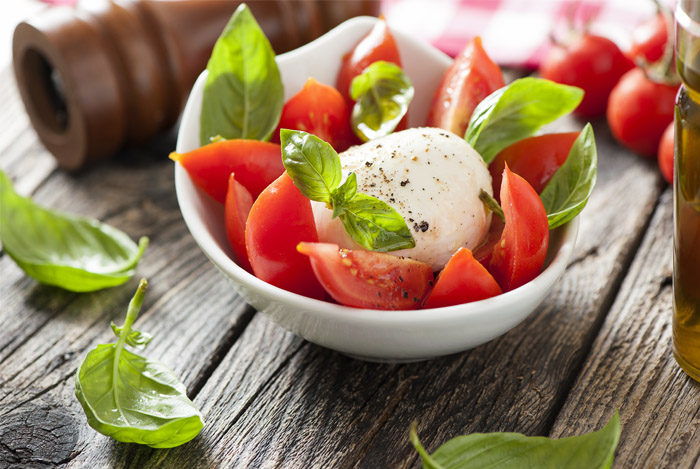
Basil
Sure, basil is good with tomatoes and mozzarella, and a pesto just isn’t a pesto without it, but before it became a pizza topping, it was widely regarded in traditional cultures as a healing medicine.
The powerful antioxidants in basil are known to protect the liver and help reduce fevers as well as reduce inflammation.
Basil is an effective pain reliever, and it’s one of the best things to use to reduce your feelings of stress.
Use fresh basil as often as possible, but if you can’t find any fresh, look for basil preserved in oil, as it retains more of its beneficial compounds.(9)
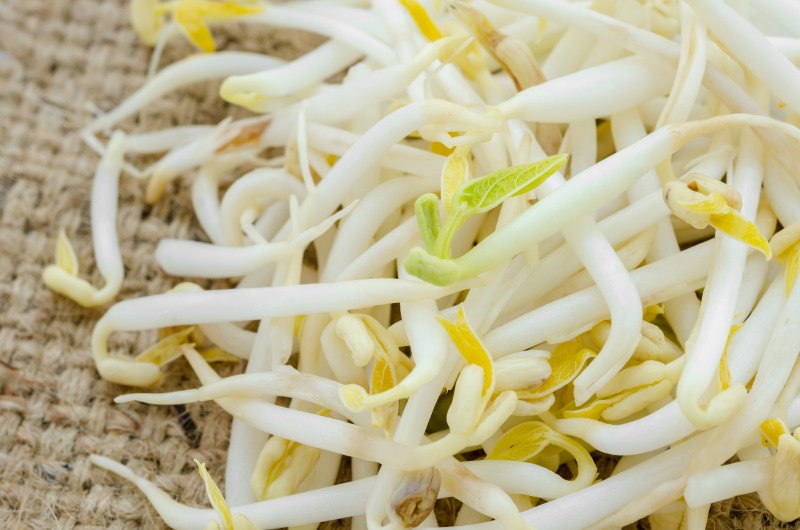
Bean Sprouts
Sprouts are a tasty and crunchy addition to salads and wraps, and they boast exponentially more nutritional value than unsprouted beans.
The nutrition in sprouts is easily absorbed by our bodies, and you can even learn to sprout beans at home.
Bean sprouts are high in protein as well as the B vitamins we need for good energy metabolism.
They contain quite a bit of fiber and are filling without being high in calories, which makes them perfect for anyone trying to manage their weight.
Bean sprouts have compounds that help regulate cellular respiration and manage free radical damage, decreasing your risk of cancer.(10)
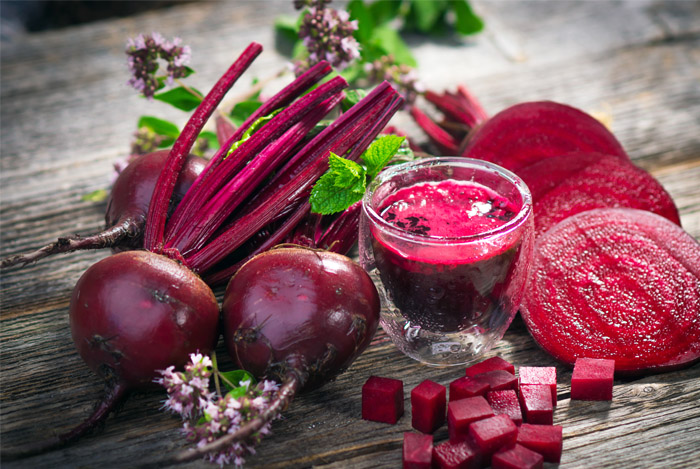
Beets
These bright red roots aren’t just for grandma, though she can certainly get all the benefits of eating them.
Many people shy away from beets since they don’t know what to do with them, and they may not enjoy the earthy flavor the first time or three they eat them.
It’s worth trying new recipes, though, as this superfood is a master of detoxification and anti-aging.
Full of folate, fiber, and minerals, this hard root is known for being able to detoxify heavy metals from the body, especially from the liver.
It helps prevent the formation of cancers and protects eye health.
Beets contain an enzyme called betaine that helps digestion, fights inflammation, and helps produce glutathione, which is the body’s most potent antioxidant.(11)
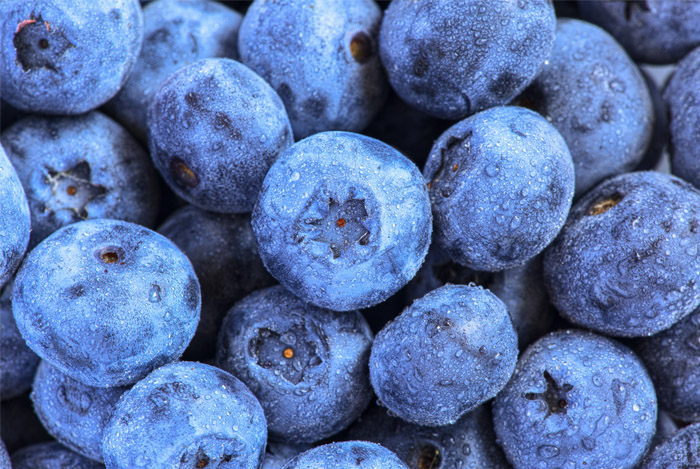
Blueberries
These little globes of goodness contain anthocyanins, which are the types of antioxidants found in brightly and deeply colored fruits.
The incredibly high amounts they contain can help you ward off cancer and aging and even help improve brain function.
Blueberries are showing promise as a preventative treatment for Alzheimer’s.
They also contain gallic acid, which is a potent antifungal and antiviral compound, as well as reducing inflammation throughout the whole body.
They even help improve cholesterol levels.
Choose fresh organic berries or frozen when fresh isn’t available.(12)
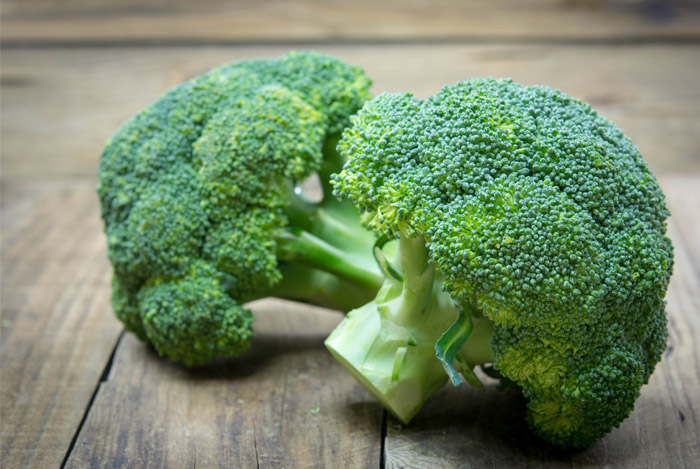
Broccoli
Broccoli contains sulforaphane, which is released by light cooking, such as steaming.
This process gives broccoli its distinctive smell, but it’s also the compound most responsible for broccoli’s powerful cancer-fighting abilities.
Especially in terms of hormone-dependent cancers, such as breast cancer, broccoli is an established recommendation for prevention and healing.
In addition, broccoli can protect the integrity of DNA and stimulates enzyme activity inside our cells for better waste removal.
It’s even low in calories and high in fiber, so it stabilizes digestion and helps you lose weight.(13)
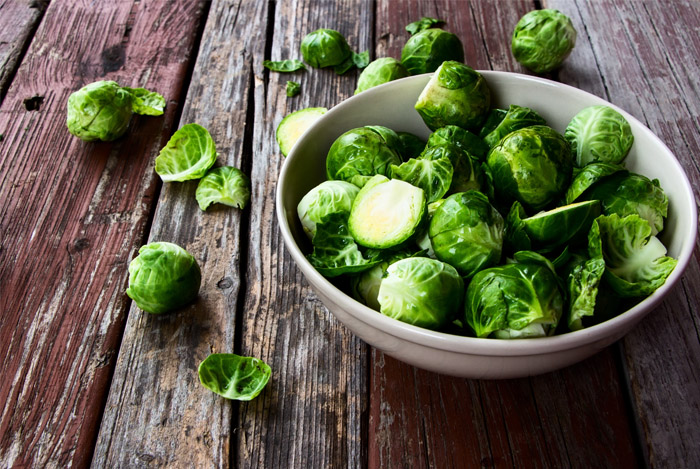
Brussels Sprouts
A heavy hitter in the nutrient density category, brussels sprouts have gotten a bad reputation from many people who didn’t enjoy them.
They are one of the best sources of vitamin K, which is essential for bone health as well as strong teeth.
They are also high in vitamin C and loaded with omega-3 fatty acids.
The phytochemicals in brussels sprouts are renowned for protecting against DNA damage and fighting free radicals that can damage our cell membranes.
The enzymes in these tiny leafy bundles are responsible for the bitter flavors many people don’t enjoy, but they are also effective at helping your body with detoxification.
Experiment with different cooking methods until you find one that suits your taste, and remember that much can be done with sauces and spices.(14)
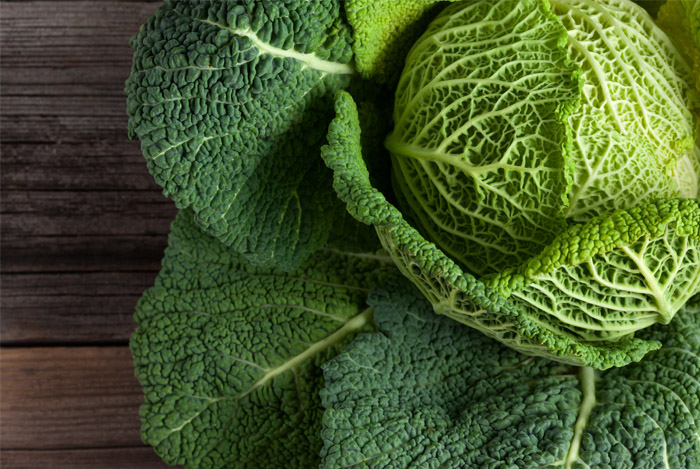
Cabbage
While you may enjoy cabbage best in the form of coleslaw, some evidence suggests that lightly steamed cabbage can lower cholesterol.
The specific types of fiber in cabbage leaves, when lightly steamed, are better able to bind to the sterols and bile acids in your digestive system, making this vegetable perfect for anyone with heart health concerns.
Lightly cooked and raw cabbage are also cancer-fighting foods, whereas longer cooked cabbage does not have this benefit.
High in vitamins K and C and fibers, this is a nutritionally smart addition to your meals.(15)
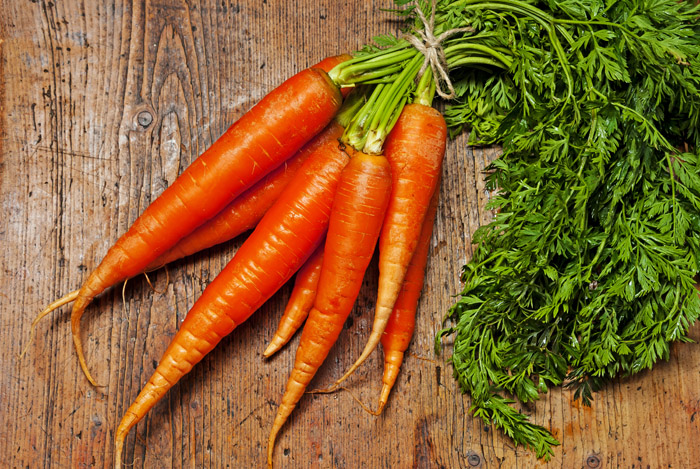
Carrots
Just about everyone is familiar with this crunchy orange root, though they can be yellow or purple too.
You might overlook this food since it’s so common, but you would be losing out on a great nutritional resource.
Carrots contain beta-carotene, the precursor to vitamin A, so the old wives’ tale that they can improve your vision is true.
Plus, carrots and carrot juice can improve heart health because of how well they reduce oxidative stress.(16)
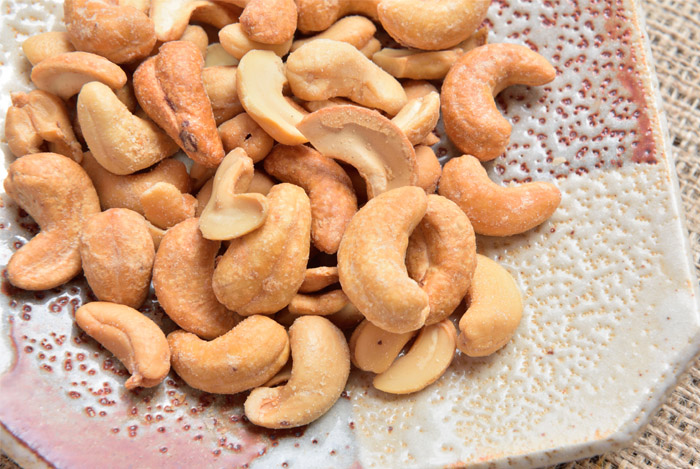
Cashews
Go ahead and eat the cashews first out of the mixed nuts tin.
These tasty curled nuts pack a heart-healthy, gallbladder-loving punch.
Most of us know someone who has suffered with gallstones or have had their gallbladder removed.
Instead of suffering the same fate, eat cashews weekly to help prevent gallstones from forming.
These nuts are also remarkable for lowering cholesterol levels, so you’ll be lowering your risk for cardiovascular disease at the same time.
While they are high in nutrients, they are also high in fat and calories, so use moderation.(17)
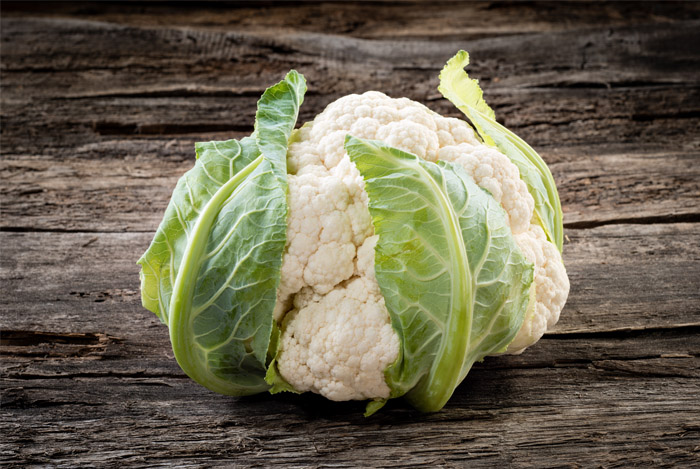
Cauliflower
You may think this plain-looking vegetable is nutritionally empty because of its bland color, but cauliflower is considered a cruciferous vegetable, like broccoli and cabbage, and has a unique combination of carotenoids, tocopherols, and ascorbic acid, all of which are health-promoting antioxidants.
Cauliflower, like all the brassica vegetables, helps ward off chronic illnesses, such as cardiovascular disease, diabetes, and cognitive decline.
Make use of this pale vegetable as much as possible to even prevent cancer.(18)

Chaga
This mushroom grows on birch trees in northern climates, which includes the northern parts of the United States.
This gnarly-looking mushroom is the master of the immune system.
Not only do the compounds in chaga mushrooms help stimulate the immune system to help deal with bacteria and viruses more effectively, but they also help calm an overactive autoimmune reaction.
Since immune disorders are so common today, this is a great tool to have in your arsenal.
Chaga also contains Superoxide dismutase (SOD), which are enzymes that protect our bodies from free radical damage.
Look for extracts in powder and liquid forms.(19)
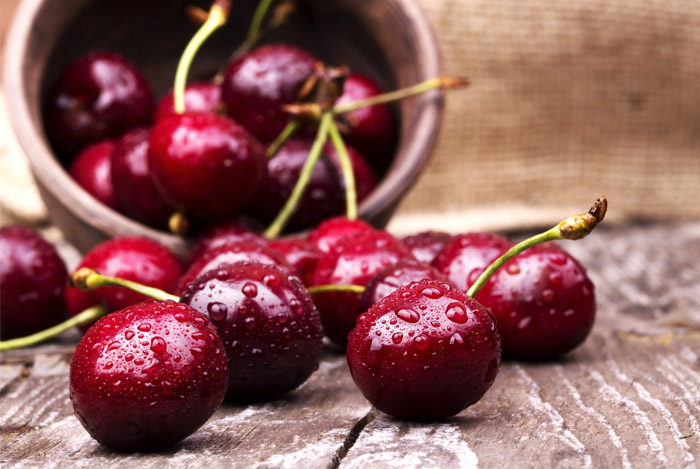
Cherries
One of the most popular fruits today, cherries, especially the tart variety, are remarkable for reducing the symptoms of gout, perhaps because of their high anthocyanin content.
Those who eat tart cherries or drink their juice can expect improvement in both osteoarthritis conditions as well as heart health.
Boasting a high fiber content, vitamin A, and vitamin C, these anti-inflammatory fruits even contain melatonin, so eating them close to bedtime can help you get a good night’s sleep.
Look for fresh or frozen cherries as well as juices and avoid products with added sugars.(20)
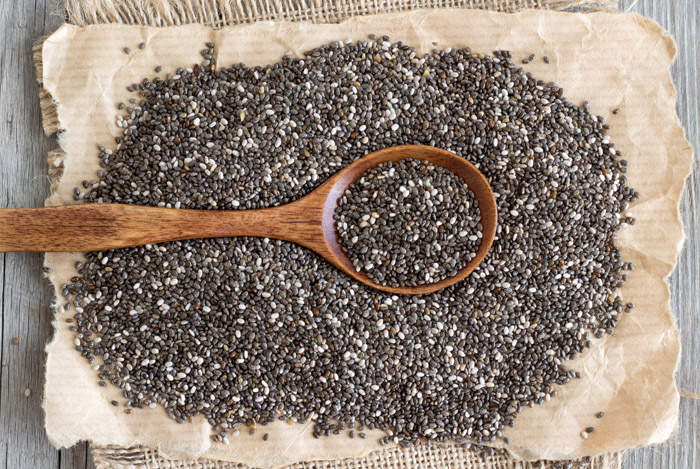
Chia Seeds
This superfood was originally native to Mexico, and ancient cultures revered it for its ability to impart strength and energy.
Runners and warriors would eat these little seeds before running long distances or going into battle because of their sustaining properties.
It’s not hard to see why: these tiny seeds are full of protein and fiber and have loads of minerals and fatty acids.
Aside from energy and endurance, chia seeds are known for helping in weight loss and gaining muscle.
Be sure to drink plenty of water when you add chia seeds to your diet, as they can absorb up to 12 times their own weight in liquids.(21)
For the complete list of health benefits please read this 16 Science-Backed Health Benefits of Chia Seeds article.
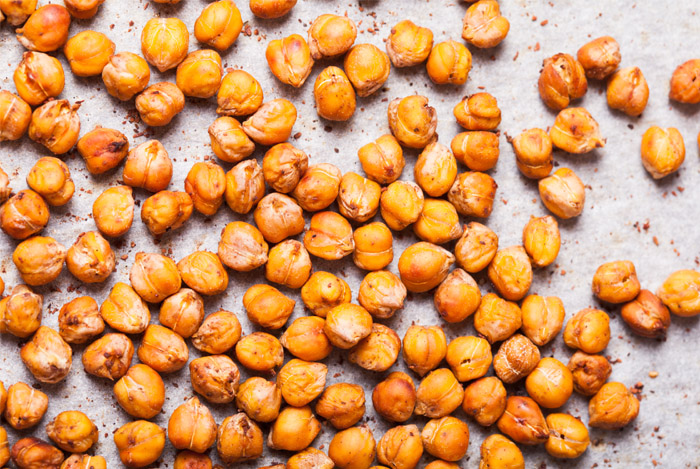
Chickpeas
As the main ingredient in hummus, chickpeas have many health benefits.
Notably, they are remarkably high in a long list of minerals, including iron, magnesium, potassium, zinc, copper, and manganese, as well as being high in the essential vitamin folate.
Since they are so high in fiber, they’re perfect for weight management as well as blood sugar control.
This vegetarian source of protein is also useful for improving digestion and heart health.
Chickpeas are an incredibly versatile ingredient, so you can use them in a variety of recipes.(22)
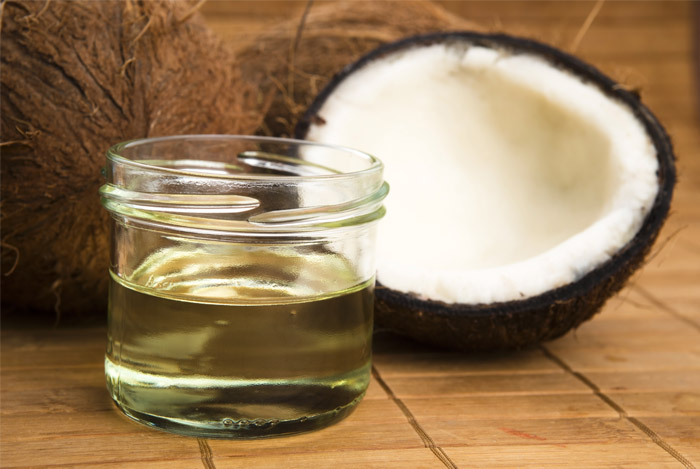
Coconut Oil
This superfood has a bad reputation in some circles since it’s considered a saturated fat, which only means that all of its molecular double bonds are filled, and it does not have any inherent health risks.
It also means that this oil is heat stable, being perfect for cooking at high temperatures without oxidizing.
Coconut oil is known for being an aid to weight loss, as it contains medium-chain triglycerides, or MCTs, that help our bodies burn fat.
Plus, it helps improve cholesterol levels, reduce oral bacterial plaque growth, and it’s delicious.
There are countless recipes and applications, so try different ones to see which ones you like best.(23)
For the complete list of coconut oil benefits please read this article 28 Science-Backed Health Benefits of Coconut Oil
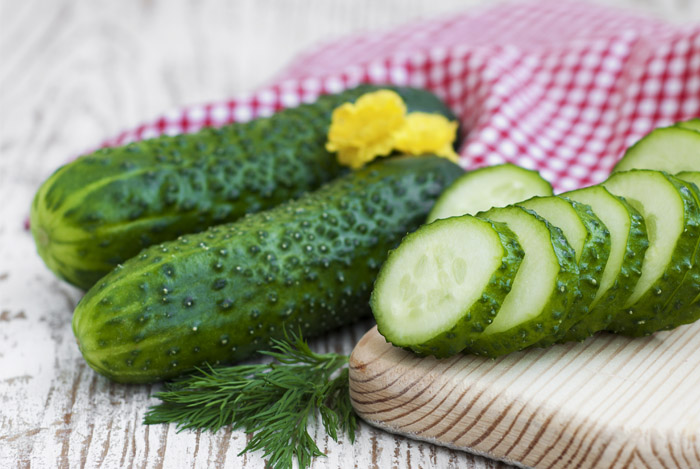
Cucumbers
This cooling vegetable is high in nutrients and water content, which makes it extremely hydrating, especially during the summer.
Because they are so hydrating, they’re amazing at helping maintain healthy skin and have been used to treat acne and other skin conditions.
It’s high in the electrolyte minerals potassium and magnesium, which are essential for proper cellular function and energy metabolism.
They are one of the most alkalizing vegetables in the world, helping to balance the pH of the blood for improved immunity and decreased inflammation.(24)
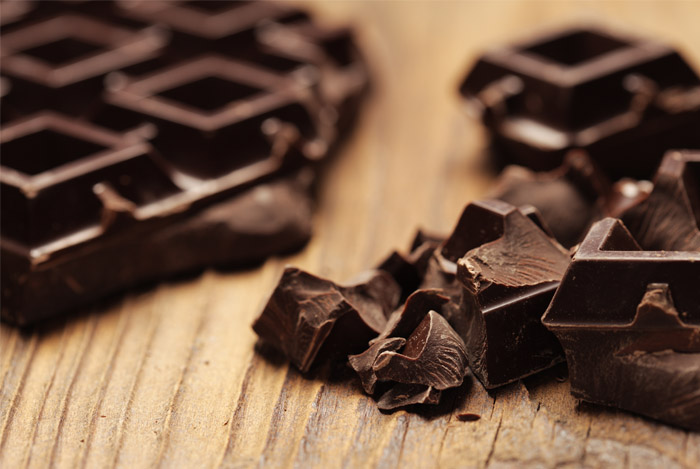
Chocolate
Dark chocolate contains antioxidants called flavonols, which are known to improve heart health, lower blood pressure, and improve blood flow to the brain.
Some studies point to flavonols as being able to reduce the risk of stroke, since they can decrease excess stickiness in blood platelets.
Chocolate is also high in magnesium, which helps muscles relax and can help you sleep at night.
Be mindful when choosing your sources, though.
Milk chocolate and candy bars in the checkout aisle tend to have very low amounts of the beneficial nutrients and a boatload of sugar.
Look in the specialty aisles or online for dark chocolate—at least 70% cocoa.
It’s less sweet but more flavorful, and it’s the kind that will do you the most good.(25)
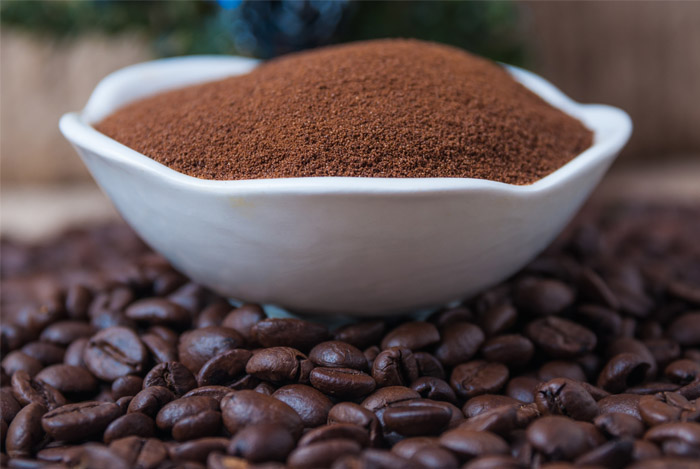
Coffee
Yes, coffee makes the list of superfoods!
Coffee is the largest source of antioxidants for most Americans, and for those who tolerate it well, it’s shown to lower risk factors for breast cancer as well as improve glucose tolerance and can help in weight management.
Coffee can help relieve symptoms of depression, improve heart health, and even improve brain function.
Benefits are seen only with the caffeinated versions, though, and caffeine supplements do not have the same traits.
Aim for 1–2 cups per morning, as more than that can do more harm than good, especially over extended periods of time.(26)

Eggs
Instead of the flawed science warning us against eating eggs, especially whole eggs, further research is showing that these nutrient-dense foods are an exceptional choice for heart health.
Eating eggs can significantly reduce cardiac risk by lowering triglycerides and cholesterol, lowering inflammation, and improving factors that can lead to metabolic syndrome.
This is primarily due to high amounts of omega-3 fatty acids, which have a wide range of health benefits.
Look for free-range eggs, since they have much greater amounts of omega-3 fatty acids along with other vitamins and minerals, and carry a far less risk of salmonella contamination.(27)
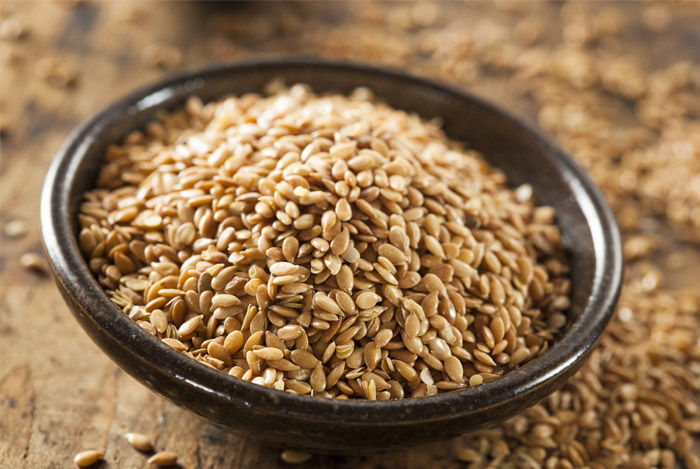
Flax Seeds
The largest plant-based source of omega-3 fatty acids, flax seeds are high in magnesium, manganese, and phosphorous and are also a great source of fiber.
The soluble and insoluble fiber in flax helps you feel full for a longer time and also helps keep your digestive system moving smoothly.
The specific kind of omega-3 flax contains is called ALA, alpha lipoic acid.
ALA is essential for maintaining healthy, smooth skin and can keep eyes from getting dried out.
ALA is also anti-inflammatory and helps support a well-formulated weight loss plan.
You can enjoy flax in many ways, from baking to salad toppings, but our digestive systems can’t break down the shell.
Make sure to chew thoroughly, or grind them before use.(28)
For the complete list of flax seeds health benefits check out this article.
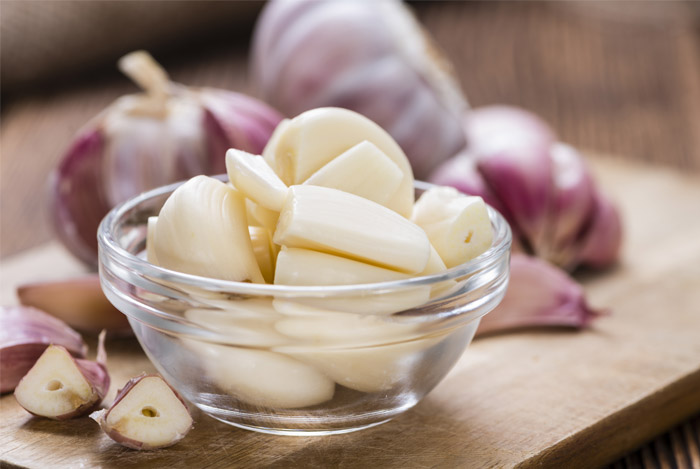
Garlic
Garlic is go-to for many types of infections, including those resulting from bacteria, viruses, parasites, and fungi.
Not only does it help regulate the immune system to fight off invaders, but it also works directly on these infections to kill them, so you can heal far faster.
Many studies show promising results from garlic consumption to fight cancer, so this tiny bulb packs a punch not just in flavor but in benefits too.
Some research is showing that garlic can decrease plaque in arteries around the heart, reducing the risk for cardiovascular disease.
Garlic is best eaten raw, which takes a little getting used to, but cooked is also good.(29)
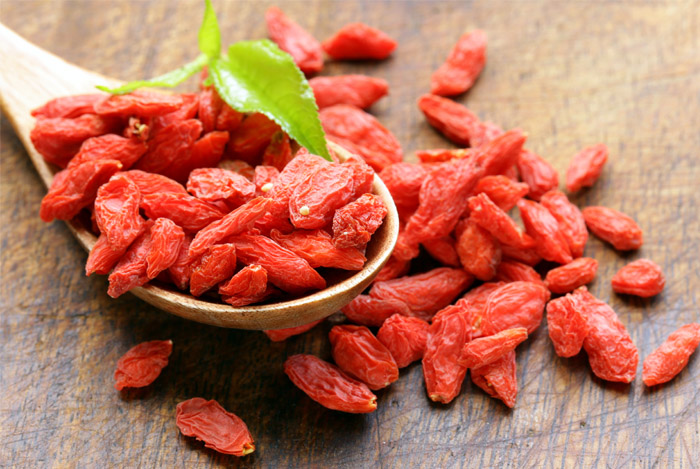
Goji Berries
For over 2,000 years, traditional Chinese medicine has recognized the benefits of this little bright berry, also known as wolfberry, which can increase energy and improve neurological function.
High in selenium, vitamin C, vitamin A, potassium, iron, and amino acids, goji berries also sport an incredibly high amount of phytochemicals, such as lycopene and lutein.
While goji berries help maintain liver and kidney health, where they truly shine is being able to improve the eyes.
Not only can regular consumption of them improve eyesight, but they can also protect the retina to help prevent and reverse glaucoma.(30)
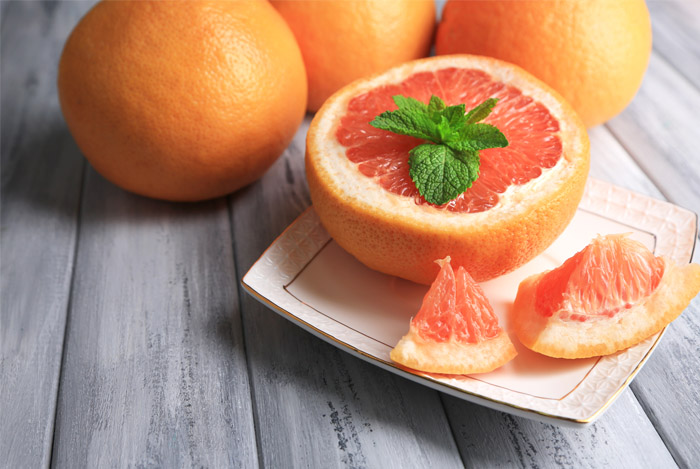
Grapefruit
Many people eat half a grapefruit for breakfast, and they swear it keeps them slim.
An enzyme in grapefruit called AMPK improves how our bodies burn energy, which improves insulin resistance and glucose tolerance, leading to overall weight loss.
Grapefruit also contains a compound called nootkatone, which boosts AMPK activity and helps you burn more fat.
Plus, the vitamin C and potassium content help improve skin condition.
Some studies even suggest that grapefruit can help fight cellulite.(31)
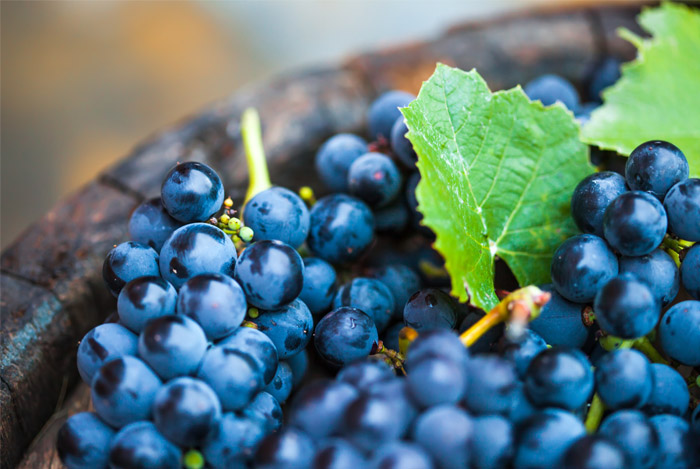
Grapes
If you want to live longer, you should definitely include grapes in your daily diet.
Grapes, especially dark grapes, contain the phytochemical resveratrol, which has been shown to increase the expression of genes that affect our longevity.
The longest living cultures on Earth, those who live in the Blue Zones, consume grapes regularly.
Studies are also showing that grapes have an anti-inflammatory and regulating effect on the cardiovascular system and benefit patients with coronary artery disease.(32)
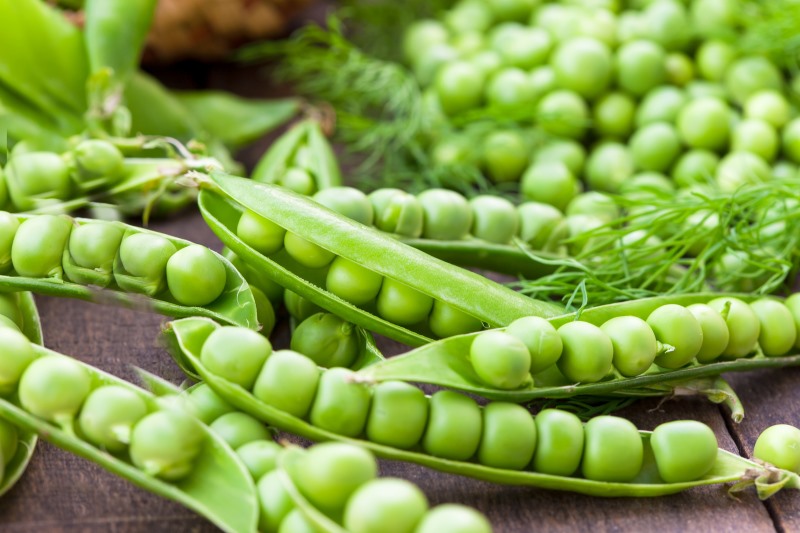
Green Beans
It can be easy to pass up these common beans in the grocery store because they seem so average or because we have memories of the mushy canned versions.
Green beans, also called string beans, are extremely high in vitamin K and manganese and one of the few available sources of silicon, an often overlooked mineral that’s essential for bone health.
Research is showing that green beans are helpful for reversing the factors leading to type 2 diabetes and can also improve markers of cardiovascular inflammation.(33)
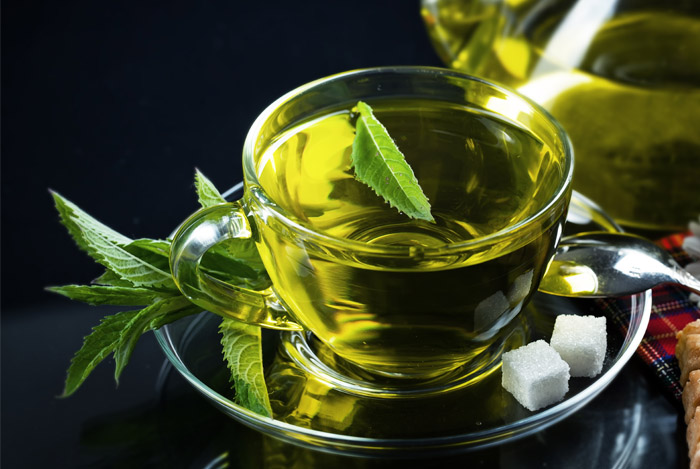
Green Tea
A staple of Asian cultures, this mild-tasting iced or hot tea has some amazing claims to make, backed by scientific studies.
Green tea contains compounds known as catechins that are so powerful they may actually help prevent cancer.
These catechins, EGCG and ECG, are responsible for protecting the DNA in our cells from mutating, inhibit tumor cell growth, and boost detoxification enzymes.
These same catechins help speed up metabolism and improve weight loss as well as help speed recovery and boost performance in athletes.(34)
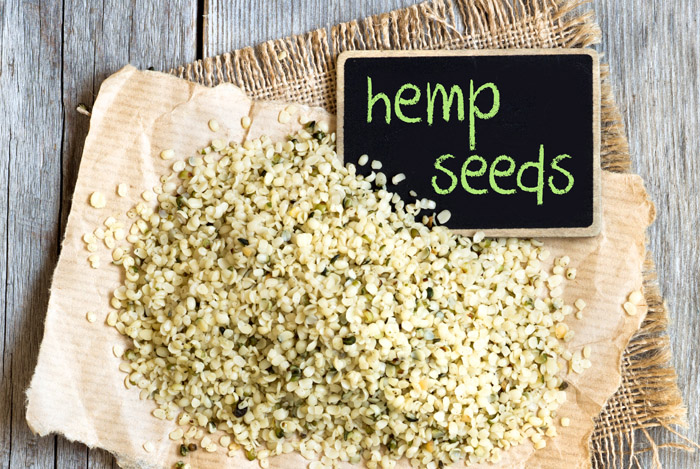
Hemp Seeds
Hemp seeds have an excellent balance of omega-3 fatty acids and are a rich source of minerals and vitamins.
Hemp is a cousin of the cannabis plant but does not have any psychoactive compounds.
What it does contain is all 20 amino acids, including the 9 essential ones that our bodies can’t produce on their own, which makes hemp a complete vegetarian protein source.
The gamma linolenic acid (GLA) that hemp seeds contain is known for helping balance hormones, improving heart health, decreasing symptoms of rheumatoid arthritis, and easing allergic reactions.(35)
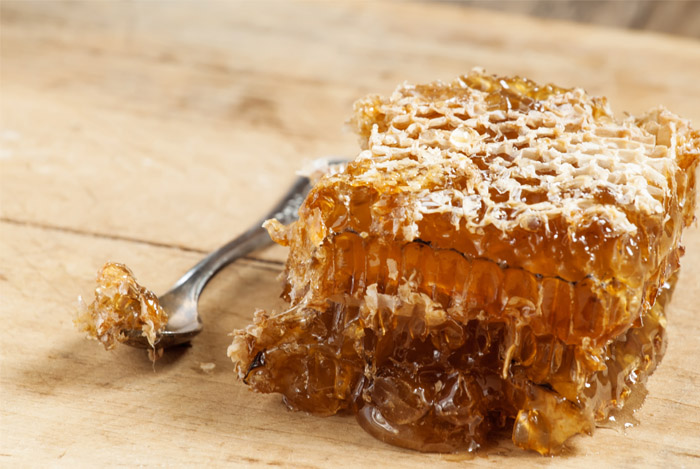
Honey
Raw honey is a superfood that is fortunately becoming easier to find.
Unheated honey contains massive amounts of enzymes and nutrients.
It’s certainly delicious, but the antioxidants, magnesium, selenium, and pantothenic acid are the real reasons to include it in your day not to mention the pollen it contains that helps to regulate the immune system and lessen the symptoms of seasonal allergies.
Honey is soothing and anti-inflammatory to all our tissues and helps us fall asleep and be more rested when we wake up.
Just remember to let your tea cool before you add it, since heat destroys enzymes.
Better yet, just eat it off the spoon.(36)
For the complete list of honey health benefit please read this article 21 Science-Backed Health Benefits of Honey.
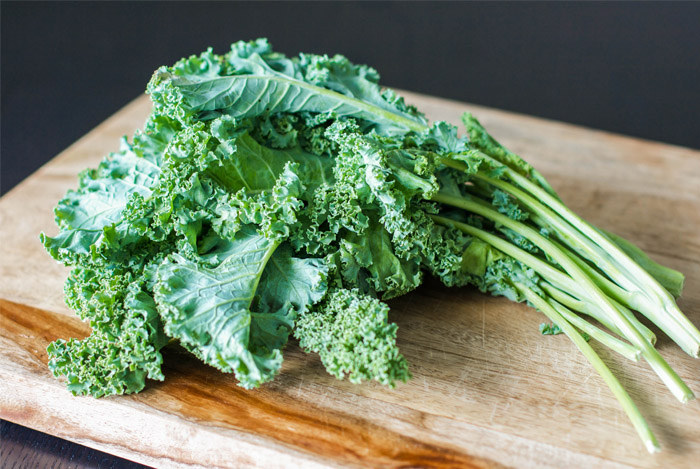
Kale
Here is the icon of the heath movement: the greenest leafy green that has a great many benefits.
Vitamin K, vitamin C, and vitamin A are available in vast amounts from these leaves as well as a long list of other vitamins and minerals in smaller amounts.
Kale is legendary for its ability to help your body detoxify itself, even at a cellular level.
Kale can stimulate the production of Phase II enzymes in the liver due to its content of sulforaphane, which can help remove pollutants from foods eaten or pollution from the environment.
Kale is one of the kings of anti-inflammatories and as such has shown promise in improving heart health.(37)
For the complete list of 23 Science-Backed Health Benefits of Kale check out this article.
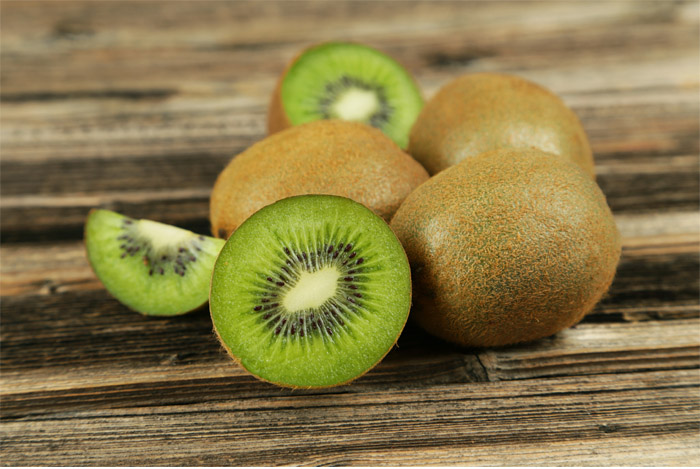
Kiwi
This fuzzy green fruit contains certain polysaccharides (complex sugars) that work together with vitamin C to double collagen production in the body.
Collagen is responsible for the elasticity in skin as well as the health of joints and tendons.
Kiwi fruit is a stellar support for eye health, as the lutein it contains can protect against macular degeneration and age-related vision decline.
It’s also a good treat to improve your sleep.
Kiwis contain natural serotonin, which helps us sleep more soundly and maintain more stable moods.(38)
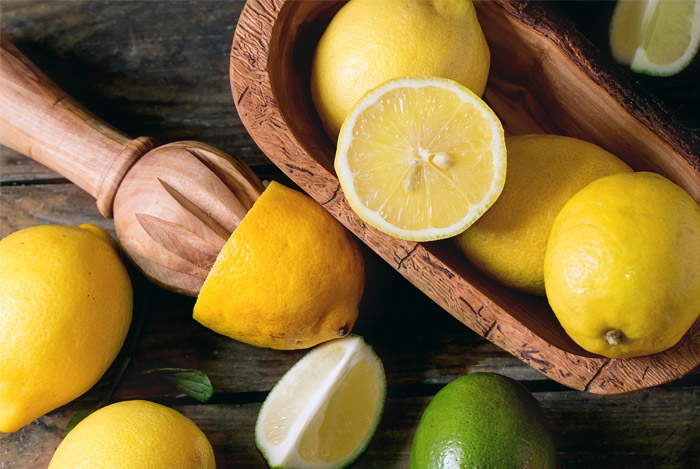
Lemons
The molecular structure of lemon juice is similar to our own stomach acid, so it makes sense that this tart yellow fruit would help us in digestion.
Lemons encourage our stomachs to regulate the speed that we process foods eaten, so we have fewer insulin spikes that can lead to future diabetic conditions.
Lemons are great for cleansing our digestive systems, too, and is a diuretic, so it helps us flush out toxins more effectively.
Lemons boost the enzyme functions in our bodies, leading to less pain and inflammation, as well as an anti-aging effect.
Their high content of vitamin C makes them a good immune booster too.(39)
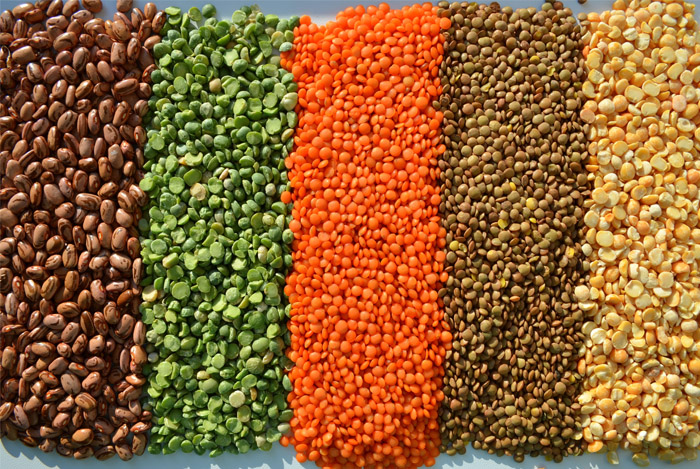
Lentils
Eating lentils regularly is a fantastic way to control blood sugar, cholesterol, and even help prevent gallstones.
These bean-like pulses are a vegetarian source of protein, but it’s their fiber that makes them more remarkable as a superfood.
The fiber in lentils binds to the bile and fats in the digestive system, making them easier to be removed.
This makes lentils ideal for weight management as well as having a healthier heart not to mention allowing you to keep your gallbladder.
Lentils are very easy to find in most supermarkets and will be near the other dried beans.(40)
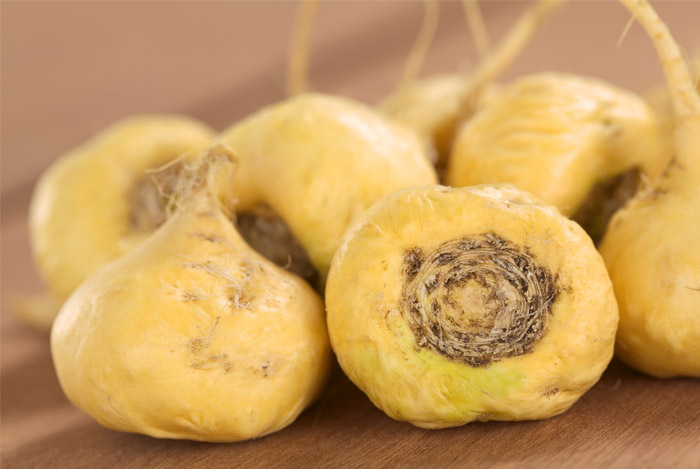
Maca Root
Maca is known as an adaptogen, which means it helps your body adapt to changing conditions.
Most notably, it helps your body regulate hormone balance.
If you are under a lot of stress or are frequently in stressful situations, your adrenal glands produce adrenaline and cortisol on a pretty much constant basis, making you feel fried and strung out, leading to health problems, such as insomnia and weight gain.
Maca helps reduce those levels and restore a natural hormone balance.
Look for gelatinized maca, as this form is what’s best utilized by the body.(41)
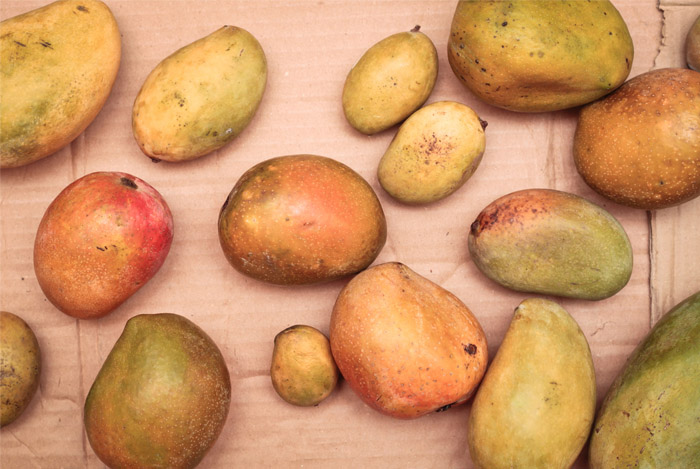
Mango
The golden yellow flesh of the mango is both sweet and full of fiber.
Loaded with the antioxidants zeaxanthin, quercetin, astragalin, and beta-carotene, mango is traditionally known for its anti-aging qualities, improvements in vision, and increased immunity.
Since they are also high in vitamin K, they can help build stronger bones, and the vitamin B6 helps support brain function as well as stabilizing moods and improving sleep patterns.(42)

Mangosteen
This Asian fruit boasts a class of compounds called xanthones, which are potent natural antibiotics and antivirals, making mangosteen great for fighting off infections.
It’s even been used to help treat HIV!
Mangosteen is also known as a cancer fighter.
It’s able to inhibit the growth of new cancer cells as well as induce apoptosis (programmed cell death).
Mangosteen is not only, therefore, a good cancer fighter, but also a good choice for prevention.
Since it’s rarely available fresh, look for it as juice and extracts.(43)
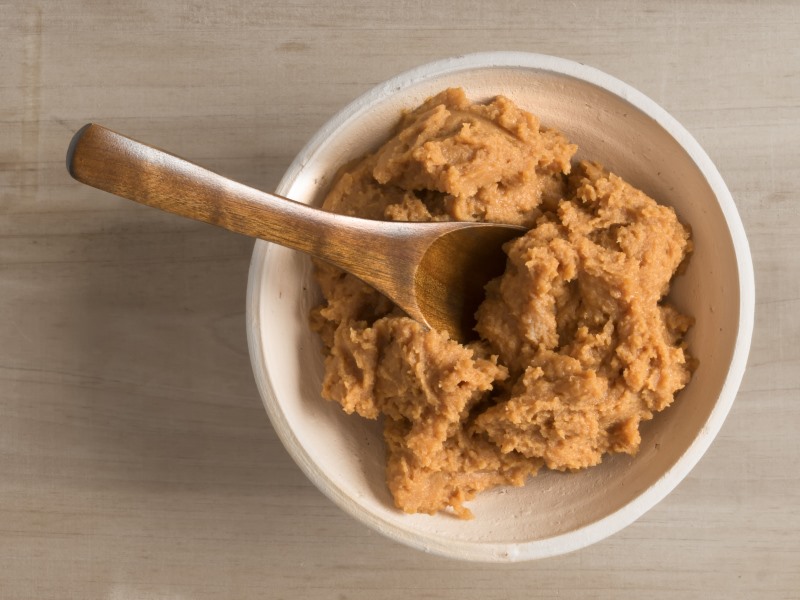
Miso
You might be familiar with miso as the base for soups in Japanese restaurants.
If you know anything about Japanese culture, you know that everything has a purpose.
Miso is essentially fermented soy paste.
Soy is somewhat controversial since it can have endocrine-disrupting effects.
On the other hand, because it’s fermented, Miso doesn’t display this problem.
Instead, it’s a potent probiotic that can help feed the flora in your gut and improve digestion.
It’s also been studied as an effective treatment for breast cancer.
Try it as the traditional soup, or use it as a condiment or in sauces.(44)
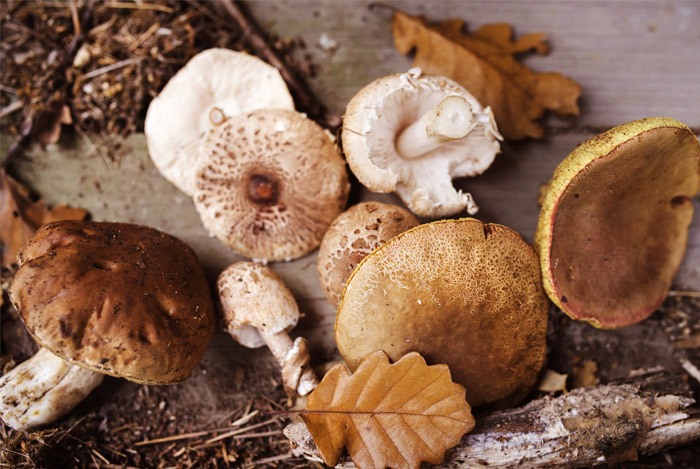
Mushrooms
Mushrooms are a versatile food and classified as a fungus.
Their texture makes them a popular choice as a meat replacement for those avoiding excess animal products.
Mushrooms are high in B vitamins, which are needed for energy metabolism, as well as selenium and copper, which are difficult to get from other sources.
What makes mushrooms stand out is their immune-boosting capabilities.
Mushrooms, even the most common ones in the grocery store, help fight off even the most powerful infections and are being used to combat drug-resistant bacteria and even several forms of cancer.(45)
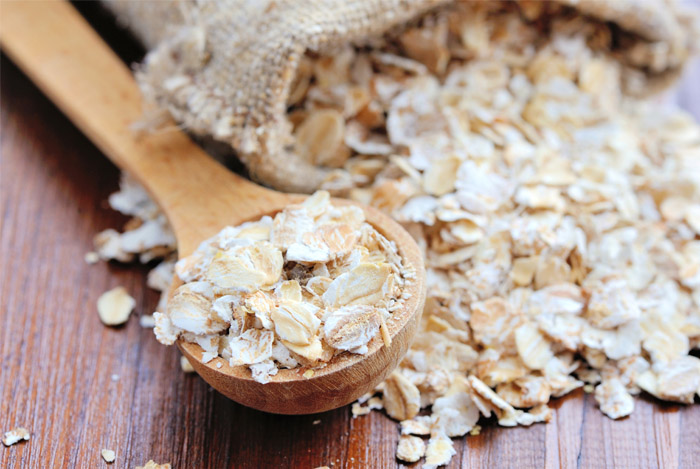
Oats
Whether it’s part of your breakfast or crumbled on your dessert, oats are known for their ability to decrease cholesterol and improve heart health.
Oats are a grain that is slower to digest because they contain large amounts of fiber.
It’s this fiber that not only keeps us fuller for a longer period of time but also binds to excess cholesterol in the body so that it can be easily eliminated.
Oats are known as neurotonic and antispasmodic, meaning they are calming to your neurological system as well as soothing to digestion.(46)
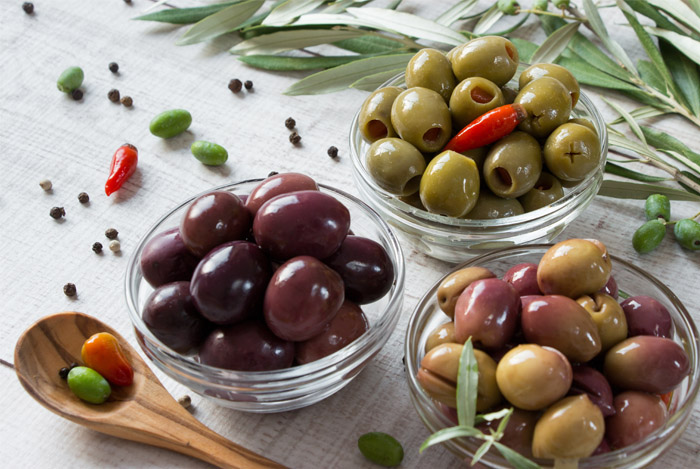
Olives
As the origin of the much-famed olive oil, olives have the same heart-healthy anti-inflammatory properties of this versatile and healthy oil that is packed with omega-3 fatty acids.
Olives are high in polyphenols, which protect against premature aging and improve brain function.
Olives are one of the few foods that help our bodies produce glutathione, our master antioxidant.
The polyphenols in olives act as natural pain relievers, and they are a much safer option than over-the-counter drugs.
Although many different types of olives are available, they all have similar nutritional benefits.(47)
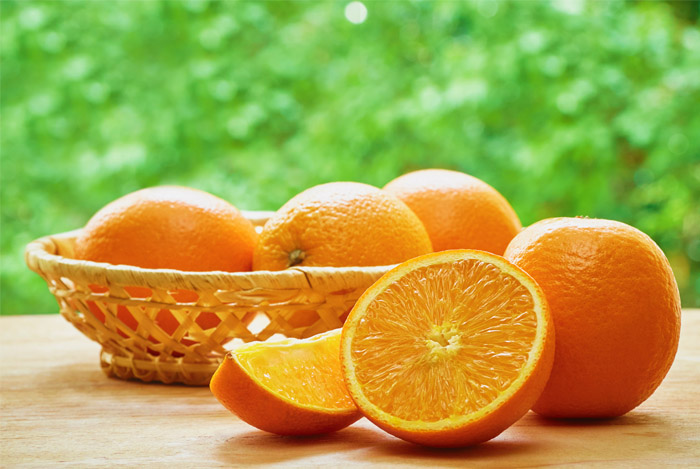
Oranges
This popular citrus fruit has many benefits that you’re missing out on if you’re just drinking a box of juice.
Fresh oranges are naturally high in vitamin C, folate, fiber, and bioactive antioxidants.
The healing properties of oranges aren’t just from vitamin C.
Instead, oranges have unique phytonutrients that help boost the immune system to help fight off infections.
Some of the beneficial nutrients are found in the white parts of the flesh, so don’t remove it completely.
Eating oranges can also help protect the integrity of our cellular DNA.(48)
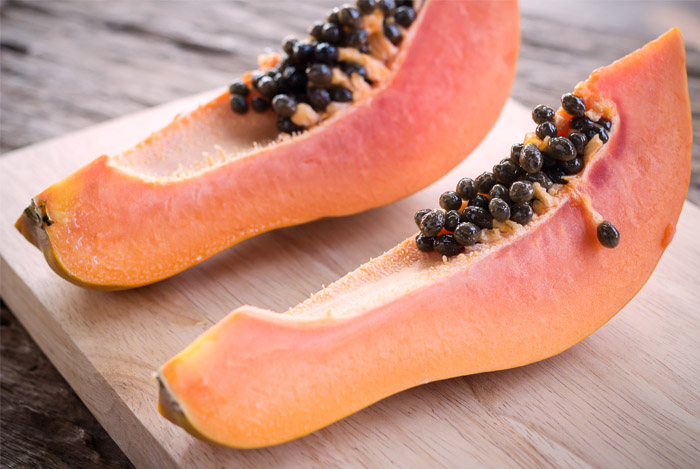
Papaya
This tropical fruit improves digestion due to its high enzyme content.
Papaya contains an enzyme called papain, which is often used in supplement form to improve digestion.
Papaya can help wounds heal faster, reduce inflammation, and improve the platelet cells in the blood.
Papaya is also useful in the fight against cancer.
The papain enzyme is able to digest proteins not only from food but also of abnormal cell colonies, as seen in tumor development.
In this way, papaya is not only useful for preventing cancer but also as a possible treatment.(49)
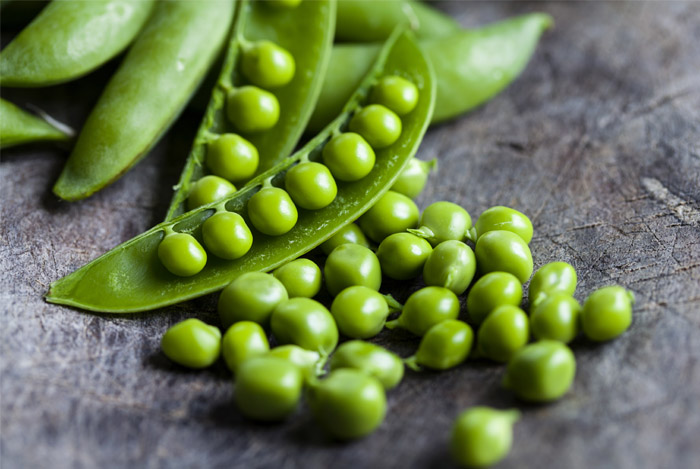
Peas
Many children suffered through the mushy gray canned variety of peas as they grew up, and such peas were a sad excuse for this delicious fresh vegetable.
Normally a vibrant green and popping with sweetness, peas are a protein powerhouse so potent that they’re even making protein powders from it.
Peas are a legume, so they’re similar to lentils, and contain compounds called saponins and phenolic acids.
While peas have a great deal of nutrition, these saponins and phenolic acids are responsible for their super status, reducing the risk of heart disease and cancer and helping control blood sugar.(50)
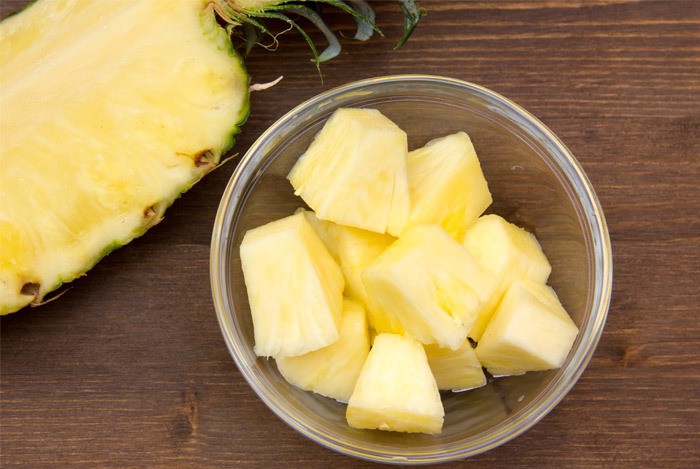
Pineapple
This delicious tropical fruit is loaded with vitamin C, B1, potassium, and manganese, so it’s great for immune health, but what makes pineapple really shine is the powerful enzymes it contains.
Pineapple enzymes can help you digest your food better, allowing you to absorb more of the nutrients you take in.
These enzymes also help fight inflammation throughout your whole body.
The primary enzyme it contains, bromelain, is so powerful that it can selectively attack cancerous cells even more effectively than some chemotherapy drugs.(51)
For the complete list of all health benefits of pineapple, checkout this article 19 Science-Backed Health Benefits of Pineapple.
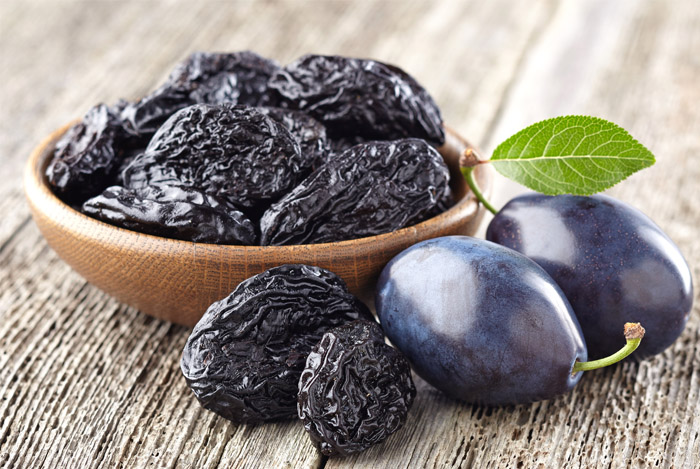
Plums
You might not think about your cell membranes every day, but they’re an important consideration in your overall health.
Cell membranes, along with brain cells and certain hormones, are largely made of fats.
Plums contain phytonutrients called neochlorogenic and chlorogenic acid, which control the damage caused by the harmful free radical superoxide anion, which specifically targets the integrity of essential fats in our cells.(52)
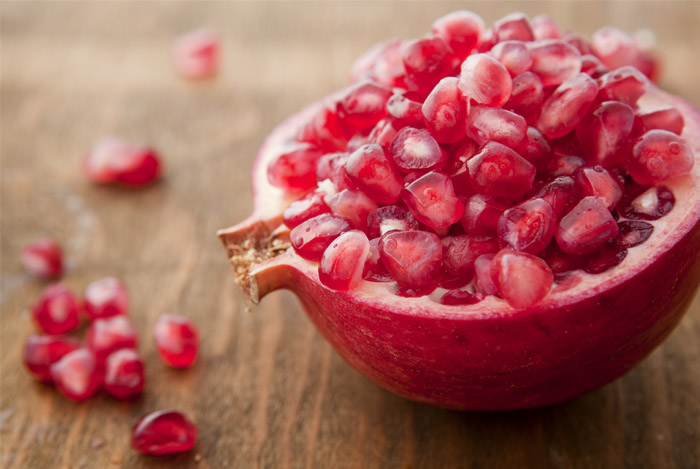
Pomegranates
Traditionally representing fertility with its abundance of juicy seeds, this Mediterranean fruit does indeed stimulate desire in both genders and can help with the symptoms of impotence.
If you’re trying to conceive, adding pomegranate to your daily diet could help you speed up the process.
The flavonols contained in pomegranate seeds are effective for treating arthritis, since they are potent anti-inflammatories.
Pomegranates also contain a rare omega-5 fatty acid that is known to reduce the risk of cancer and decrease tumor cell proliferation.(53)

Pumpkin
This staple of fall flavors packs a surprisingly healthful punch for improving eyesight partly because it has more than double the daily requirement for vitamin A.
Pumpkin can help maintain vision for those suffering with retinitis pigmentosa, a condition that can eventually lead to blindness.
Since vitamin A is vital for skin health, it can also help you to look younger for a longer time.
Pumpkin is known for its ability to help regulate blood sugar as well, so those at risk for diabetes can add this to their diet for beneficial effects.
Skip the desserts, though, and choose the less sweet choices, such as roasted pumpkin.(54)
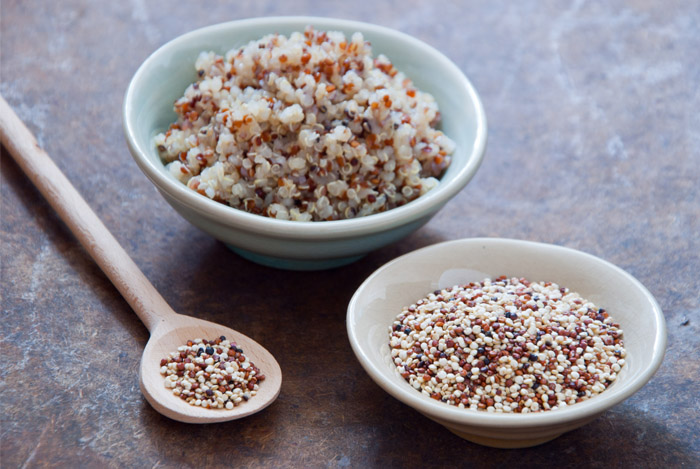
Quinoa
Pronounced KEEN-wa, this high-protein, high-mineral, high-vitamin food is a perfect gluten-free source of fiber.
Quinoa has significant quantities of B vitamins, along with magnesium and iron, all of which we could use more of in our modern diets.
Quinoa is considered a functional food in that it can be eaten frequently and has a nutritional content that may help ward off disease.
Quinoa is easy to adapt to many recipes, including rice or oats, and is great for any meal of the day.
You can even make quinoa into patties or burgers if you’re trying to eat less meat.(55)

Reishi
This fungus native to China is associated with a longer, healthier life for good reason.
Reishi is powerfully anti-inflammatory, and it has pharmaceutical-like qualities without being a dangerous drug.
While it doesn’t contain many vitamins or minerals, the active compounds in reishi are effective in fighting cancer, stimulating the immune system, and helping regulate our delicate balance of hormones.
It helps improve liver function, so your body is able to detoxify itself more efficiently.
Reishi is even able to help control the symptoms of allergies.
This fungus is usually available in powdered or extract form.(56)
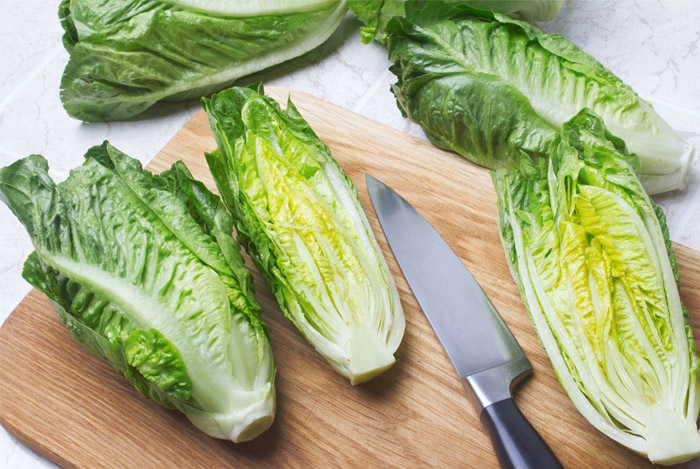
Romaine Lettuce
Romaine lettuce contains a good deal of water, so it’s great for hydrating during the summer months, but that’s not its only benefit.
This green leafy vegetable is on the sweeter side and boasts high amounts of vitamins A, C, and K, making it great for the immune system as well as for bone health.
What’s truly impressive, though, is its amino acid profile, containing 18 of these vital nutrients.
Romaine lettuce helps protect our DNA from the damage of free radicals from such sources as pollution, radiation, and other toxins.(57)
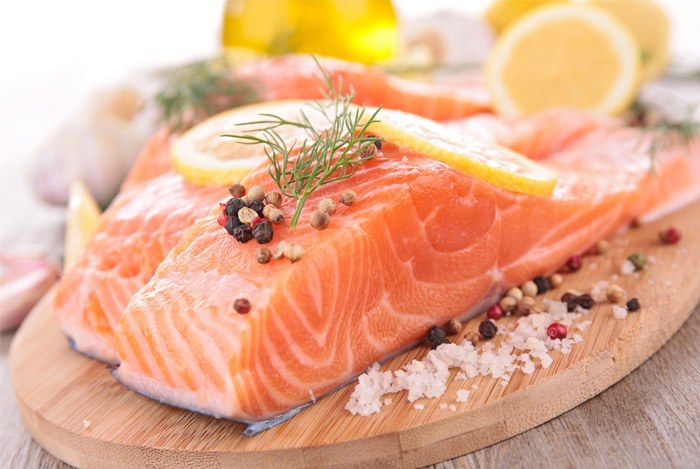
Salmon
Salmon is a large fish known for its dark pink flesh that’s well marbled with fat.
The fat in salmon is especially good for us, since it’s made primarily of omega-3 fatty acids, which benefit the heart and circulatory system as well as decrease overall inflammation in the body.
Some of these omega-3 fatty acids are made of DHA, or Docosahexaenoic Acid, which is an essential substance for brain and neurological health and can help prevent age-related cognitive decline.
The best way to eat salmon is as lightly cooked as possible or even raw as in sushi to prevent the oils from oxidizing.
Try steaming or baking instead of frying.(58)
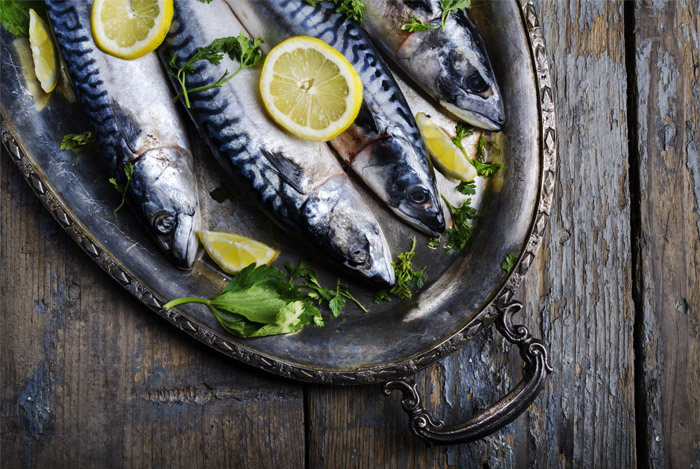
Sardines
Most often found canned, these tiny fish boast some of the highest levels of omega-3 fatty acids in the world.
The omega-3 oils from marine sources are especially good for us since we can digest them and use them most effectively.
High in calcium and selenium, sardines are also a good source of protein and B vitamins, so they’re great to keep you energized.
Eating sardines has been proven to help brain function, reducing symptoms of anxiety, depression, and other neurological conditions.(58)
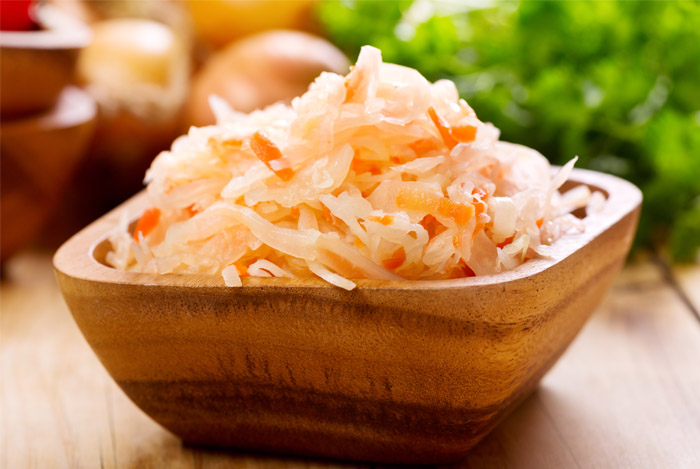
Sauerkraut
Such fermented foods as sauerkraut contain vast quantities of probiotic beneficial bacteria for our gut as well as the fiber they love to consume.
Sauerkraut contains many times more beneficial bacteria in one serving than in any probiotic supplement, but the trick is that you have to eat the raw stuff, either made at home or in the refrigerated section.
Sauerkraut that’s been heated is no longer a living food, and while it may still be tasty, it won’t give you the probiotic kick that you’re looking for.
Healthy gut bacteria has been tied to improvement in many conditions, such as immune disorders, food allergies, IBS, mood instability, hormone imbalances, metabolic dysregulation, and even cancer.(59)
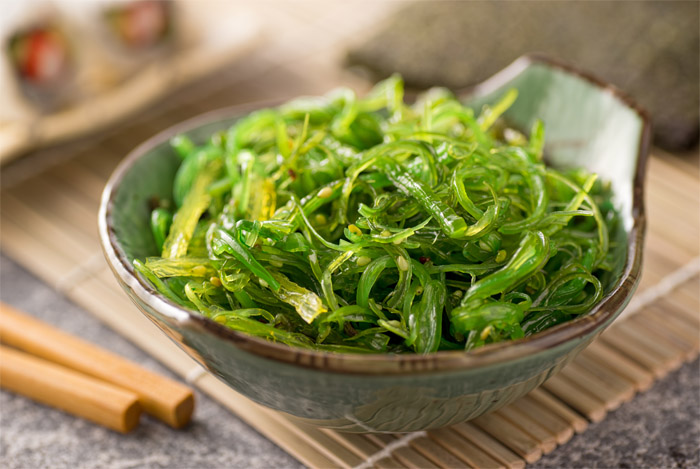
Seaweed
Most often used in Asian cuisine, seaweed is high in iodine as well as quite a few other vitamins and minerals.
Seaweed contains a compound called fucoxanthin, which has been shown to reduce the symptoms of diabetes, even reversing such conditions as insulin resistance.
Because of this same compound, seaweed has been shown to improve the burning of stored fat in the body, making it a perfect tool to help you lose weight.
The flavor and texture might take a little getting used to, but it’s most often found fresh or dried and can be used in salads and soups.(60)
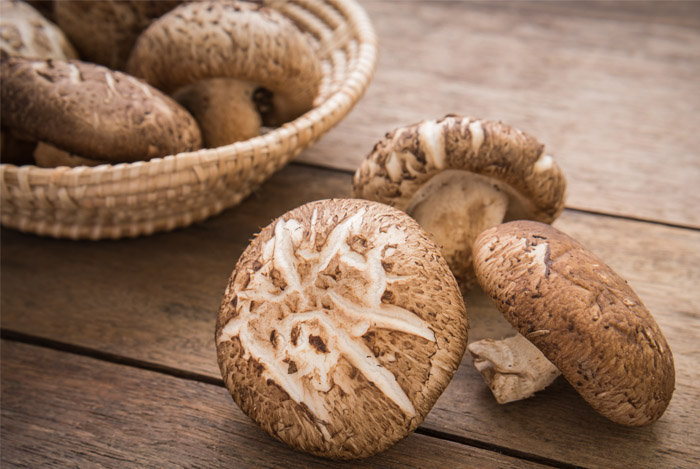
Shiitake Mushrooms
We know that mushrooms, in general, are excellent for the immune system.
Shiitake mushrooms take this a step further.
These special mushrooms not only help fight cancer but can also help repair DNA damage done by other cancer treatments.
Shiitake mushrooms can inhibit the growth of tumors and induce apoptosis in cancerous cells.
These mushrooms contain phytonutrients that improve heart health, and they also have unique fibers that help fight obesity and stimulate the body to burn more fat.(62)
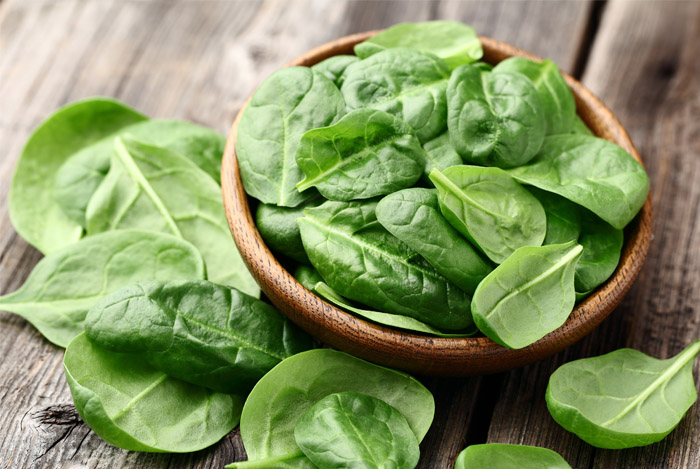
Spinach
Popeye was right. Eating your spinach will make you stronger.
Spinach is easily one of the most nutrient-dense foods on the planet, overflowing with vitamins, minerals, antioxidants, and phytochemicals.
This means that spinach helps make everything in our bodies work better, fighting off the signs of aging, reducing the risk of chronic disease, removing toxins, and giving us more energy.
Spinach can dramatically reduce our levels of inflammation and can help us think faster and learn more easily, even helping to prevent age-related cognitive decline.(63)
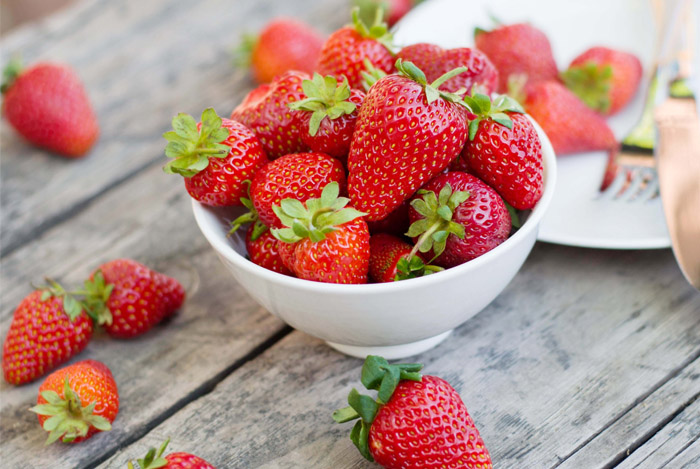
Strawberries
Fun fact! Strawberries contain more vitamin C per serving than oranges.
It’s true!
Eating strawberries is a smart way to keep your immune system in peak condition, but their benefits don’t stop there.
Strawberries are a low-sugar, high-fiber fruit that have large amounts of anthocyanins, a potent antioxidant that helps boost brain power and slow signs of aging.
Eating strawberries is a perfect way to protect your skin, as they have been shown in studies to reduce wrinkles, heal sun damage, and decrease rashes due to their ability to help the body create collagen, an essential part of healthy skin.(64)
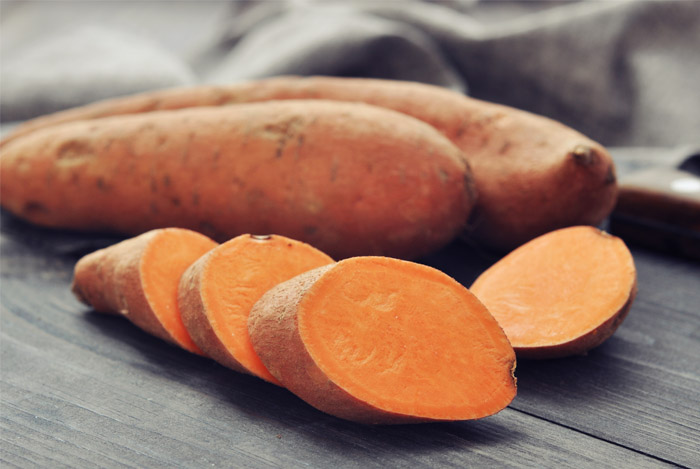
Sweet Potatoes
It’s time to switch out those boring white spuds for this bright orange and nutrient-filled variety.
Sweet potatoes are a strong anti-inflammatory, with massive amounts of vitamin A, which is needed for good eyesight, as well as quite a few other vitamins and minerals in lesser amounts.
It’s even good for weight loss, since it’s low in calories but still filling.
What’s truly impressive is its cancer-fighting abilities.
These tasty tubers contain highly active polyphenols that can shrink tumors in less than a week.(65)
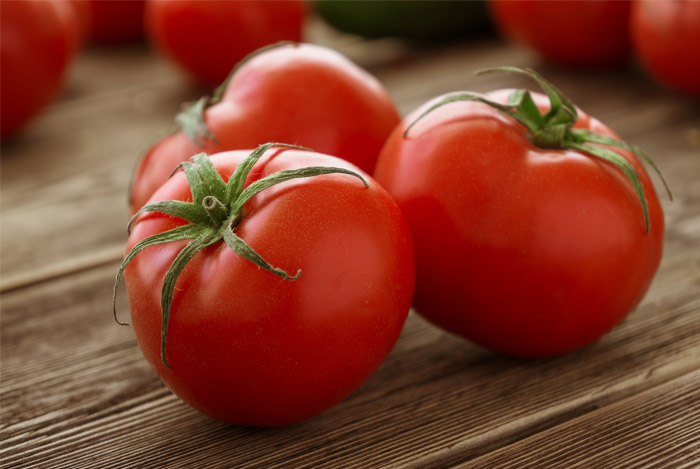
Tomatoes
Tomatoes are known for their high lycopene content, which is present in all colors of tomatoes, so don’t shy away from the more rare homegrown types.
Lycopene is a powerful inhibitor to cancer growth and defends against many different types of cancers.
As is a trend in many of these superfoods, tomatoes decrease inflammation throughout the whole body.
High in essential minerals potassium and phosphorous as well as other vitamins and nutrients, the nutrition in tomatoes is best absorbed when they are slightly heated and are absorbed better when eaten with a little fat.(66)
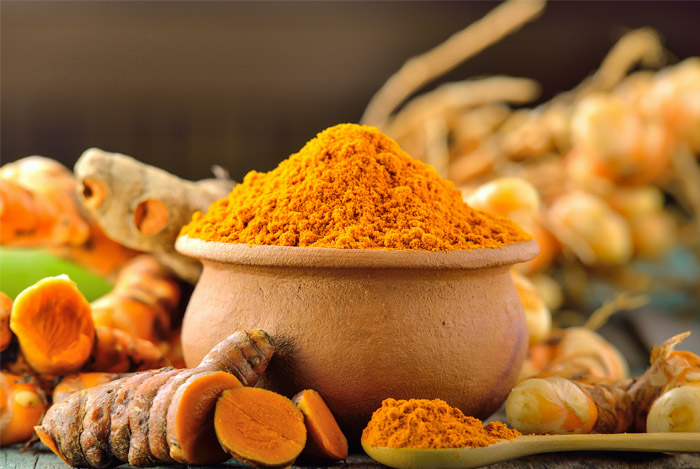
Turmeric
If the nutrition world had magic fairy dust, it would be turmeric.
This pungent bright yellow spice has benefits that far outweigh the use of many common medications.
Curcumin, the active component of turmeric, may be the most powerful anti-inflammatory around and can decrease the pain from many conditions, from common headaches to autoimmune arthritis.
Turmeric can help prevent slow blood flow and thickened blood and has even been shown to improve mood disorders.
This spice can kill cancer cells and prevent new ones from forming.
When adding this spice to your foods, make sure to add a hint of black pepper, since it helps it absorb better.(67)
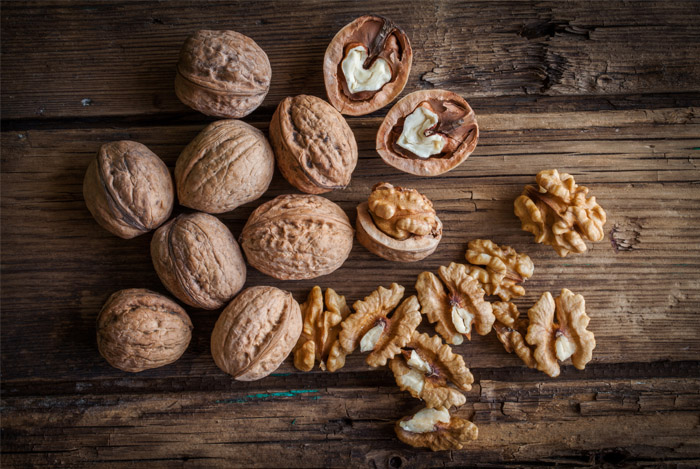
Walnuts
Some foods look like the organs they benefit most, and this is the case with walnuts.
Eating walnuts gives a big boost to your brain power.
The fats in walnuts can significantly increase memory retention and ease of learning new things.
They can also help maintain motor skills and cognition abilities as we age.
These nuts can help maintain the coatings of nerve fibers and improve communication of neurotransmitters to help with neurological disorders, such as anxiety and depression.
These same fats are also what make walnuts a heart-healthy food and can reduce the risk of metabolic disorders.(68)
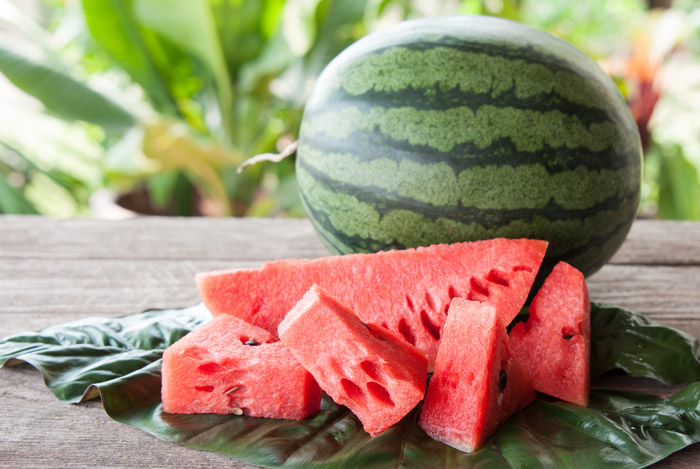
Watermelon
Lycopene can be found in tomatoes but is also present in this delicious summer treat.
This carotenoid is what gives watermelon its bright pink color and is also responsible for combatting the free radical damage we’re exposed to every day.
Watermelon is high in vitamin C and is being studied as a cancer treatment because of the way it decreases nitric oxide levels in the body.
It’s high in the electrolyte minerals potassium and magnesium, which can help prevent dehydration and decrease muscle soreness.(69)
Conclusion
As you can see, superfoods don’t have to be exotic or from far-off lands, and you don’t need to order them off the Internet, although you can.
Many of these superfoods are easy to incorporate into your daily diet to improve health, longevity, and quality of life.
Plus, they’re delicious, so there’s no downside!
Adding as many of these superfoods to your diet as you can is a great way to get better nutrition and live a longer, better life.
FDA Compliance
The information on this website has not been evaluated by the Food & Drug Administration or any other medical body. We do not aim to diagnose, treat, cure or prevent any illness or disease. Information is shared for educational purposes only. You must consult your doctor before acting on any content on this website, especially if you are pregnant, nursing, taking medication, or have a medical condition.
HOW WOULD YOU RATE THIS ARTICLE?
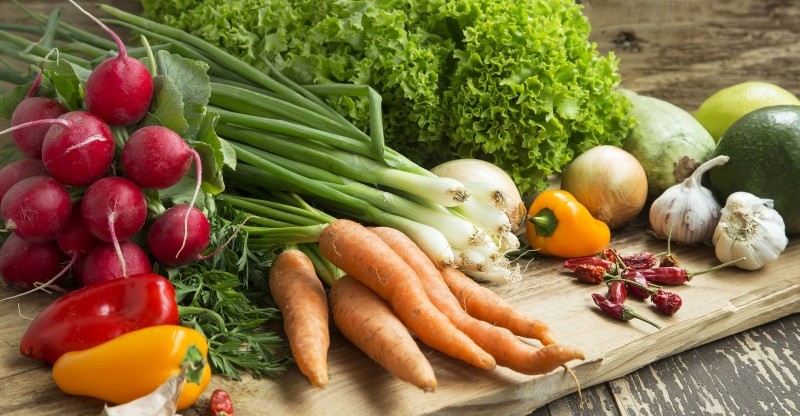


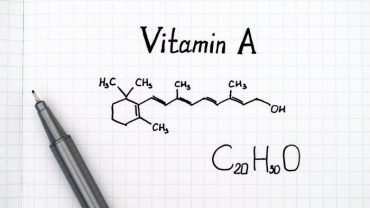
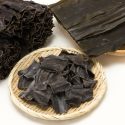
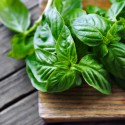

I had doubts that healthy foods can be that versatile and tasty but looking at this list I understand how wrong I was. Now I’m planning to include ALL this to my diet! 🙂
Thanks for sharing this information!
Some of the products form the list i could freeze! Will they have the same benefits after that?
Hello Jennifer! Most products keep their qualities after freezing. But still it depends on the certain product.
What way of cooking is the best for preserving all quinoa benefits? I like to add it to the soup but will it still be packed with nutrients?
Are mushrooms suitable for children? I heard or read somewhere that mushrooms are too heavy for them.
Great article! So many of the foods my family loves are on this list. I will be using this for further research, and planning shopping and gardening! Thank you so much for this. Am sharing!